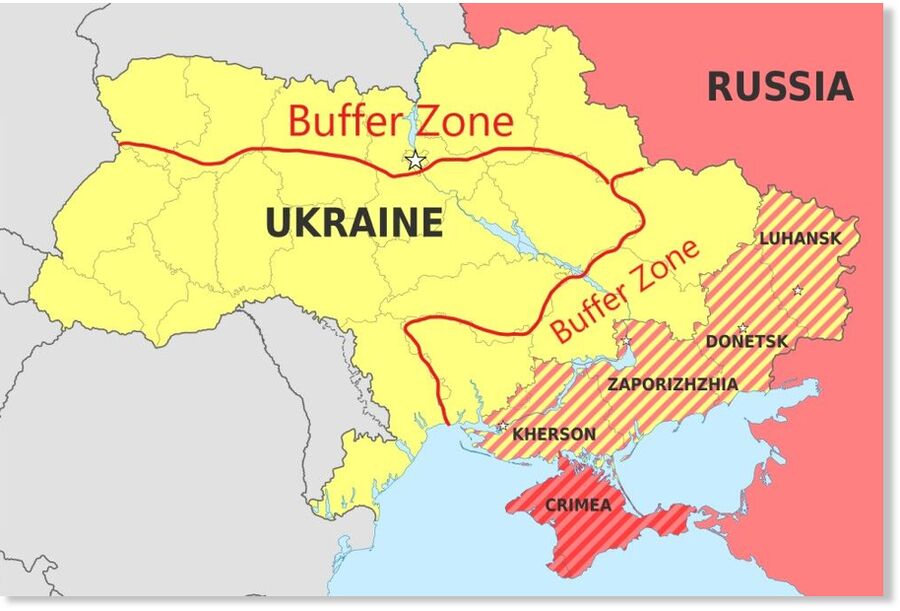
The changes were officially signed into law yesterday with the wording relevant to the conflict in Ukraine being "where the aggression creates a critical threat for the sovereignty and/or territorial integrity [of Belarus or the Russian Federation].
In this context, the Russians have also said that the use of nuclear weapons would also be permissible if an enemy attacked Russian forces in the context of the SMO in a way that definitively threatened the achievement of the objectives of the SMO.
In Sept. Putin said that NATO's plan to allow Ukraine to use longer range Western precision weapons against Russian targets inside Russia would be evidence of direct NATO involvement in a war against Russia. And that Russia would respond appropriately.
Three days ago, "Biden" approved the use of longer range Western precision weapons against Russian targets inside Russia.
Two days ago, Ukraine fired 5 US-made longer range Western precision weapons (supersonic ATACMS ballistic missiles) at a military base 130kms into Southern Russia. According to the Russians, all 5 missiles were shot down, with one falling on the periphery of the missile base, starting a fire but doing no material or personnel damage.
While many have interpreted this attack as fulfilling the requirements for a Russian nuclear response, that is obviously not the case, for four reasons:
1) The attack did not, in any way, threaten the very existence of the Russian state
2) The attack did not, in any way, threaten the achievement of the objectives of the SMO.
3) The Biden admin has less than 2 months left in power.
4) Trump and his incoming team have made no secret of their intention to negotiate a near-future settlement to end the war in Ukraine.
What then, at this late stage, was the point in the 'Biden' admin authorizing the use of long range precision weapons against Russia and why do EU leaders continue to make repeated reference to EU citizens needing to prepare for a potential "war with Russia" and sending EU/NATO military forces to Ukraine, if there's a reasonable chance of a peaceful settlement of the conflict under the Trump admin?
The problem is how any 'settlement' would play out.
First (see map) Russia will not settle for anything less than the four regions it has already incorporated into its territory (including the "demilitarization and denazification of Ukraine"). In addition, a demilitarized buffer zone (of some distance) would be necessary extending out from these regions and away from the Russian and Belarusian borders to the North.
NATO and EU nations would, undoubtedly, insist on militarily occupying ("peacekeepers") the rest of Ukraine beyond these zones, but such a presence would create an uneasy, and potentially dangerous, peace for some time to come. Hence the talk of sending their military forces to Ukraine and possible/eventual 'war with Russia'.
Of note in this respect is yesterday's announcement that the 'Biden' admin will begin sending anti-personnel landmines to Ukraine to "blunt the advancement of Russian troops". Interestingly, the mines are said to be "nonpersistent" design, meaning they become inactive within weeks of deployment. Why now? Russian troops have been advancing, in one form or another, for most of the war. Why would NATO/Ukraine want to deploy anti-personnel mines that last for only a few weeks?
Much like the use of precision long-range weapons, the use of "non-persistent" anti-personnel mines now is more likely to be part of a strategy for a negotiation settlement, than to effect any significant change on the current battlefield.
The point of authorizing (and using) both NATO long range precision weapons against Russia and anti-personnel mines now is in preparation for expected negotiations after Jan 6th.
By using these weapons and calling Russia's 'nuclear bluff', (while also being careful not to push too far) NATO expects that Russia will be forced to accept them as a de facto (rather than theoretical) part of Ukraine/NATO's arsenal against Russia, and thereby provide NATO with a more favorable basis for negotiations.
Source link

